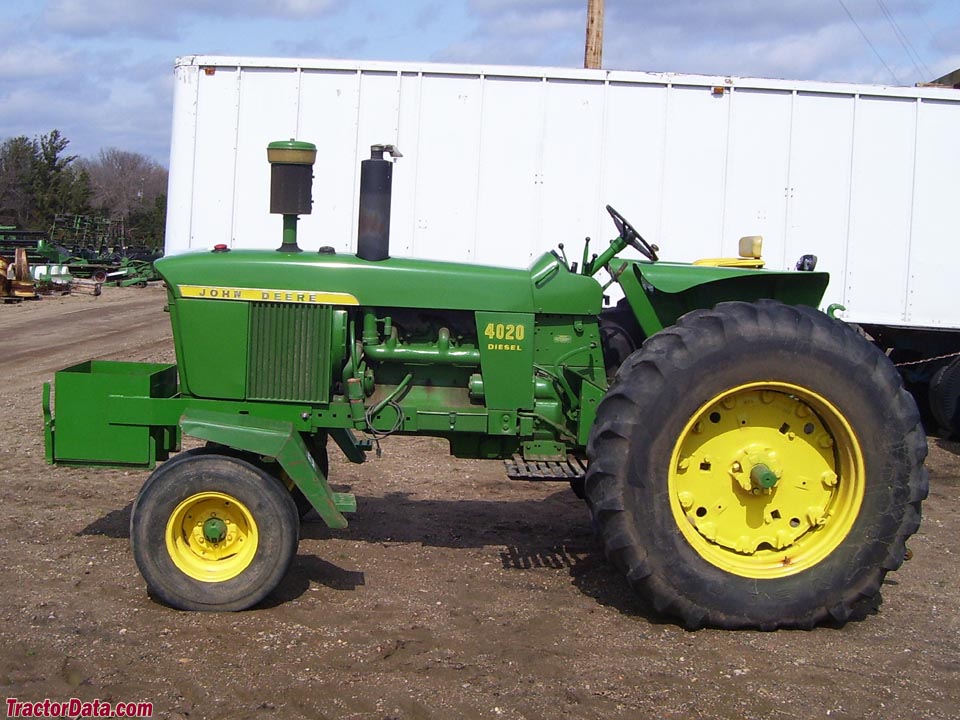2020. 2. 19. 16:54ㆍ카테고리 없음
I recently had a question from a reader concerning what year his John Deere two-cylinder tractor was, citing conflicting information he had gotten from different sources. I provided to him the year that Green Magazine research would give for his tractor, but it got me to thinking about the number of different lists out there and how they compared. It only took a few minutes to find five different charts. On the chart that accompanies this article, you will find the Green Magazine list, a list from a 1950 Deere and Company service bulletin and a list from the book, John Deere Tractors 1918-1994, which was published by Deere. In addition, you will find two lists which we found in parts catalogs. Where these companies found these lists, I’m not sure.
As you can see, about the only thing they all agree on is that “A” tractors began at 410000.First of all, let’s discuss how Green Magazine came up with our serial number/year breaks. For many years, Deere and Company factories observed an annual vacation/inventory/changeover period in the summer or early fall. This point was originally in the October/November time period.However, in some cases, that point was shifted, such as when the styled “A” and “B” tractors were introduced in the summer of 1938. Rather than have early 1938 tractors be unstyled and late 1938s be styled, the beginning of the new production year was moved up to July. Deere didn’t always change model years when a significant change was made, though.

Take the 1946-47 “A” and “B” tractors. It has long been assumed that 1946 models were long hoods with cast frames and 1947s had the pressed steel frame and battery box seat. This change was actually made in the January/February of 1947 time frame.
That’s almost dead center for the 1947 model year.The serial number list from the service bulletin is prefaced with the following: “Numerous requests for a listing of tractor serial numbers and year of production have made advisable the publication of the following information.” I can’t begin to guess how they came up with this list, other than with a great deal of concern that each model year begins with a number that is a multiple of 20,000. Most of these tractors aren’t even the first or last tractor built in a given day, let alone month or year. For some reason, they skip 1939, the first year of styled “A” production. If that weren’t enough, on the list for “B” tractors, they list number 60,000 (the first styled) as being the beginning of 1938, even though it was built in June of that year.As you can see in the middle column of the chart, the lists from Green Magazine and from the book John Deere Tractors 1918-1994 agree except that we list the first eight tractors as being 1933 models. If you look at other models, though, you will find quite a few differences. For the first “B” of the 1938 model year, the Deere book lists tractor number 46175. That tractor was built on Oct.

That could make some sense, however; out of about 40 model “B” tractors built that day, ole 46175 was the one with the highest serial number. Wouldn’t the one with the lowest number make more sense as the first of the year? Green Magazine publications list tractor number 49302 built on Nov.
John Deere 4020 Powershift
2 as being the first 1938. Because the serial number register has it noted as being “beginning of production” while the tractor just before it, 49301, has the notation “end of production.”The aforementioned John Deere books seems to have been the source for catalog list number 2 because a check of about five different models show the two lists to be the same, with just a couple of discrepancies, and those could be typos. I haven’t been able to make any sense of catalog list number 1, though it seems to sometimes use model year and other times perhaps calendar year.Of course, all of this matters a lot more to us today than it did “back in the day.” If Deere and Company wanted to declare in one of its service bulletins that something was so, who was going to argue? Back then, a serial number’s most important function was to make sure you were ordering the correct parts.I also don’t want to sound too critical of the book John Deere Tractors 1918 to 1994. Its first edition was written in 1976, and before the hobby boomed, making more accurate information necessary—it was the by far the best list available.

If you need to locate your John Deere model number and product identification number (serial number), we can help! Find your John Deere equipment below to see model number and product ID number locations.Jacks Small Engines is not an authorized John Deere parts dealer.
However, we do carry aftermarket parts for your John Deere mowers and equipment.John Deere Model and Serial Number Locations John Deere Riding Mowers Model & Serial Number LocationThe model serial number of a John Deere riding mower is printed on an identification tag located below the operator's seat or on the back of the lower frame between the rear wheels. The serial number (PIN) is 13 or 17 digits long.Find your.John Deere Walk Behind Lawn Mowers Model & Serial Number LocationThe model serial number of a John Deere lawn mower is printed on an identification tag located on the left side of the deck (standing behind the mower).
Vin Number Decoder
The serial number (PIN) is 13 or 17 digits long.Find your.John Deere Zero Turns Model & Serial Number LocationThe model serial number of a John Deere zero turn is printed on an ID tag located under the seat. You must lift the seat up to view the ID tag. The serial number (PIN) is 13 or 17 digits long.Find your.